Is the brain cell of an adult one less dead, or is it possible to continuously produce new neurons as a supplement? There has been no clear conclusion on this issue. However, at least in mammals such as mice and monkeys, scientists do find evidence that new neurons are still produced in the brain in adulthood, but this ability gradually declines with age. At the same time, cognitive function declines with aging. Promoting the brain to replenish new neurons may be an important way to fight brain aging. A study published today in the top academic journal Nature, through single-cell sequence analysis, found an important factor influencing the decline in new neuronal production capacity with aging. Researchers at Stanford University found in older mice that immune cells actually break through the blood-brain barrier and invade the brain, interfering with neural stem cell proliferation. This finding may provide a potential therapeutic target for aging-related cognitive impairment. Professor Anne Brunet focuses on the study of aging and longevity mechanisms. She and her colleagues focus on the “place of origin†of new neurons in the mouse brain, known as the subventricular zone (SVZ). In the adult brain, the neural stem cells here continue to produce new neurons. The researchers compared the brain cell composition of the SVZ region between young mice at 3 months of age and aged mice at 28-29 months of age. Analysis of the RNA sequence of 14685 single cells showed that the number of activated neural stem cells and neural precursor cells was reduced in the aging brain, which means a decrease in new neurons. At the same time, they observed that there is a kind of immune cells in the aging brain - T cells, especially T cells with high expression of CD8, which is almost absent in the SVZ region of young mice. This result surprised the researchers because it is well known that under normal circumstances, the immune cells stay in the blood vessels due to the blood-brain barrier and do not directly contact the nerve cells. Further analysis of the SVZ region of young and aging mice revealed that these T cells stalked neural stem cells in the aging brain. In the words of the researchers, T cells "infiltrated" this area. The results of studies on the human brain show that the lateral ventricles of the elderly also have T cell infiltration. What do these "unexpected" T cells do in the area of ​​neurogenesis? Compared with T cells in the same brain region in the blood vessels, the researchers found that T cells entering the brain release a signaling molecule, interferon gamma. This cytokine is usually produced by T cells after they recognize the antigen, but what it does in the brain is unclear. Single-cell transcriptome data showed that a subset of neural stem cells in the same region as T cells express a large number of receptors for interferon gamma and genes involved in response to interferon signaling pathways. Monitoring the division of these neural stem cells in vivo revealed that their proliferative capacity was significantly weaker than those of neural stem cells that responded poorly to interferon gamma. As a result, interferon gamma is very suspicious. Are they reducing the proliferation of neural stem cells? To test this possibility, the researchers designed an experiment to import T cells into the brains of young mice. It was found that the proliferation of neural stem cells in the brain of young mice was also attenuated as the response to interferon increased. Experiments in which T cells and neural stem cells were cultured together in vitro further confirmed that T cells did directly interfere with the proliferation of neural stem cells by interferon gamma. So, if interferon-gamma is blocked in the aging brain, will it cause the neural stem cells to produce more new neurons, thereby enhancing cognition? Researchers say such attractive problems remain to be studied in the future. This discovery has attracted the attention of many scientists in this field. Professor Song Hongjun from the Department of Neurobiology and Stem Cells at the University of Pennsylvania expressed his views on Nature in the same period, saying that the results may be used to develop new therapies against the immune system. Stem cell dysfunction associated with aging throughout the body." Reference material [1] Ben Dulken et al., (2019) Single-cell analysis reveals T cell infiltration in old neurogenic nichesNature. Nature. DOI: 10.1038/s41586-019-1362-5 [2] Hongjun Song et al., (2019) T cells inhibit neural stem cells in old brains. Nature. DOI: 10.1038/d41586-019-01832-0 Source: Academic Jingwei Shower Gel,Shower Cream,Body Shower Gel,Foaming Shower Gel Guangzhou Lingxue Cosmetics Co., Ltd , https://www.lxgj188.com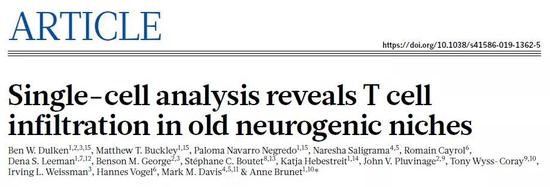
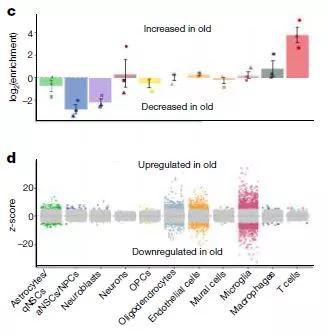
â–² Compared with young mice, the SVZ region of the aging mouse has a significantly reduced neural stem cell lineage and a significant increase in T cells (Source: Reference [1]) 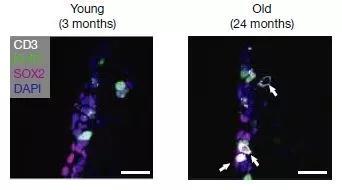
â–²The result of staining is that T cells (white) increase in the aging brain, next to the neural stem cells (purple) (Source: Reference [1]) 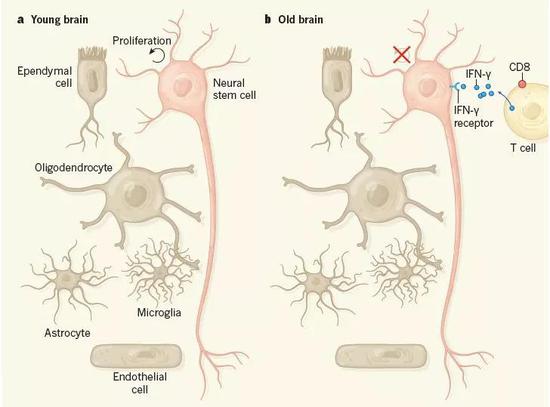
â–²In the aging brain, T cells next to neural stem cells release interferon gamma (Source: Reference [2]) 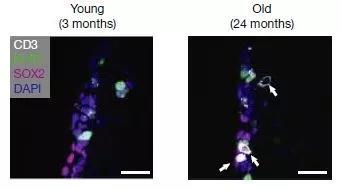
â–²In vitro co-culture experiments showed that neural stem cells responded strongly to interferon (green) with weak proliferation (purple) (Source: Reference [1])
The older the more difficult it is to produce new neurons, it is the immune cells that invade the brain.
:2019-07-04